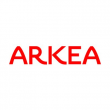DCPs look beyond T2S cost savings to user benefits
Direct connectivity to the Target2-Securities settlement platform will give participants the opportunity to build new business models, access new markets more easily and deliver new services to clients, said a white paper, Taking the Direct Route to T2S: the industry view, released this week by Swift. Ten representatives of organisations that have decided to become directly connected parties (DCPs) were interviewed by Swift about their decisions to become DCPs and their plans for T2S participation.
“As a large harmonisation project, T2S does not come without challenges for market participants,” said Isabelle Olivier, head of clearing and settlement Emea at Swift. “Many of the organisations that have chosen to become DCPs have done so in an environment of competing industry and regulatory initiatives.”
The research stated that the work of the DCP Forum, an informal group of entities that are DCPs or interested in becoming so, provided an example of how complex the changes required by T2S will be for these institutions. Many will have to prepare clients and be ready for each wave of migration and the testing procedures, but in the long-term T2S is a catalyst for innovation and change, to help clients overcome key regulatory challenges in areas such as asset protection, collateral and liquidity management.
Some institutions have adopted a ‘wait and see’ approach to T2S, preferring to assess their response to the initiative once it is under way. However, those that have chosen to go direct cite advantages such as better access to markets (which will enable them to offer the best deadlines to their clients) and quick reaction to any settlement issues that may arise.
Dario Locatelli, head of product management clearing and custody service, said: “By being a DCP, we can rationalise sending out all our instructions for settlement to the one place. While it is true we will have to maintain connectivity with each CSD for asset servicing, we can nevertheless rationalise a great deal and implement a different organisational approach.”
The first wave of migration on to the T2S platform begins on 22 June 2015. T2S will deliver many benefits to users to improve settlement processing across Europe and harmonise the euro zone post-trade settlement landscape. Budget concerns, implementation costs and availability of resources have acted as hurdles to harmonisation but the introduction of T2S in a series of migration waves will help to move all European countries involved in the same direction.
The paper also explains that DCPs not only have to ensure their internal processes are adapted for T2S, but that their clients, the indirectly connected parties (ICPs), are also prepared for T2S. Many DCPs have chosen to shield their clients as much as possible from the impact of T2S, but there are still changes and adaptations that ICPs must make in order to operate in the T2S landscape.
Hugh Palmer, product manager, financial institutions and brokers at Societe Generale Securities Services (SGSS), said a majority of the firm’s clients are buy-side institutions that rely on the bank, as their custodian, to cushion them from the major impacts of T2S. “We have focused on delivering usable information to them regarding the impact of T2S. For our financial institutions and other sell-side customers, we have taken a more strategic approach, detailing how they could handle their business in T2S and the impact it will have on network management and liquidity management. We have held bilateral discussions with these institutions to help them to forge a strategy for the T2S environment.”
During Sibos SGSS announced that it had widened the scope of its implementation of direct connectivity to T2S. When the first wave of T2S is launched in Italy and Switzerland in June 2015, SGSS, which has a long-standing presence in the major markets of the future T2S zone, will have direct connectivity for the settlement of Italian and Swiss securities. It intends to implement direct connectivity to T2S for all five markets which will join T2S in the second wave, scheduled for the end of March 2016: Euroclear Eses CSDs (France, Belgium and the Netherlands, Interbolsa and NBB-SSS in Belgium for fixed income). This will expand SGSS DCP capabilities to a total of seven T2S markets.
Swift, via its Value Added Network (VAN) Solution for T2S is one of the two connectivity providers to the T2S platform. Alain Raes, chief executive Emea and chief executive Asia Pacific at Swift, said around 90 per cent of the CSDs and central banks involved in T2S have chosen to connect via the Swift VAN. Swift’s presence in all of the T2S markets, combined with its involvement in domestic infrastructures in some of these countries along with its network, messaging and ISO 20022 expertise were proving to be compelling features for T2S participants, he said. “We can integrate these offerings into institutions’ back offices and we know this business. T2S participants are looking for operational efficiency and the combination of all of the elements we can offer, along with our pricing have played a part in our success.”
The Swift white paper concluded that the main players in the custody business already have defined strategies and know where they are going in the T2S world. When T2S was first mooted in 2006, the main focus was on savings and cost benefits. Now with the platform about to be launched, Swift identifies a realisation that T2S will deliver many benefits to users beyond cost savings.











































